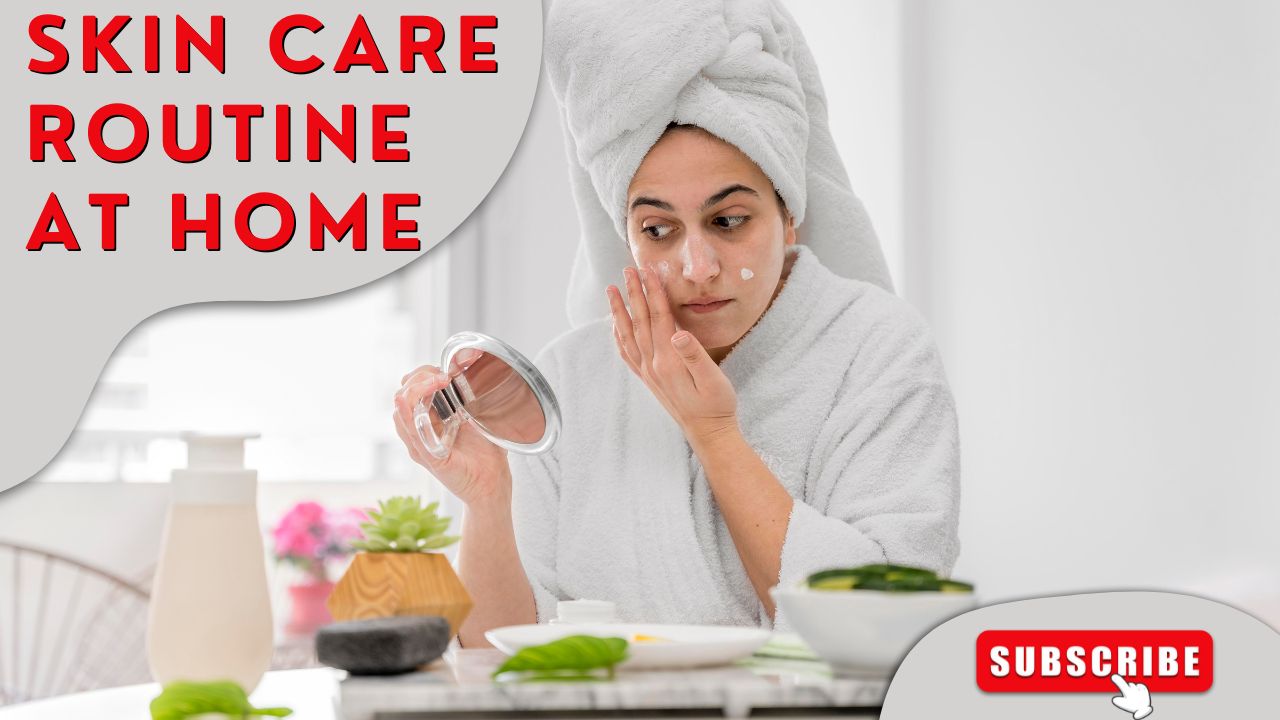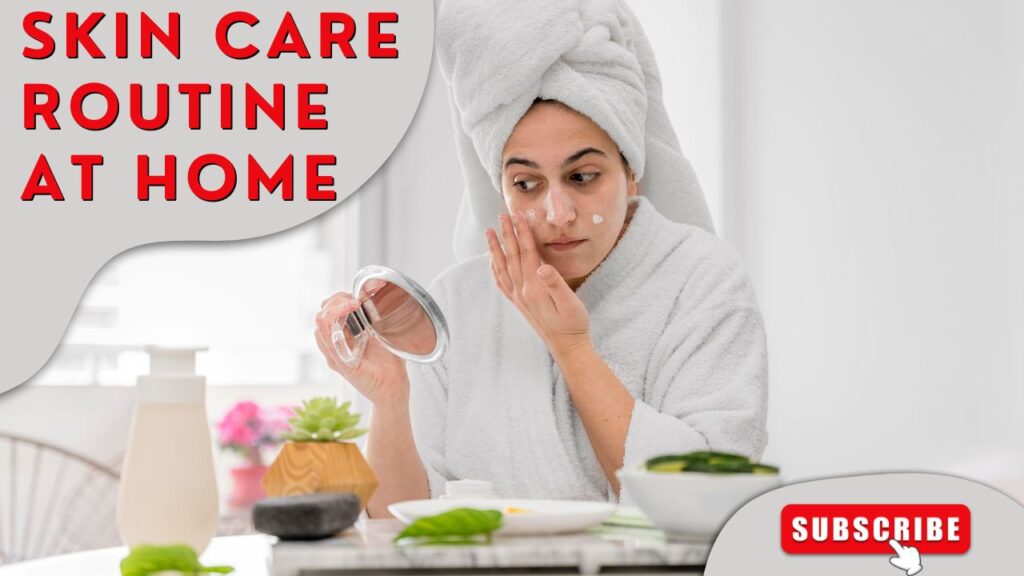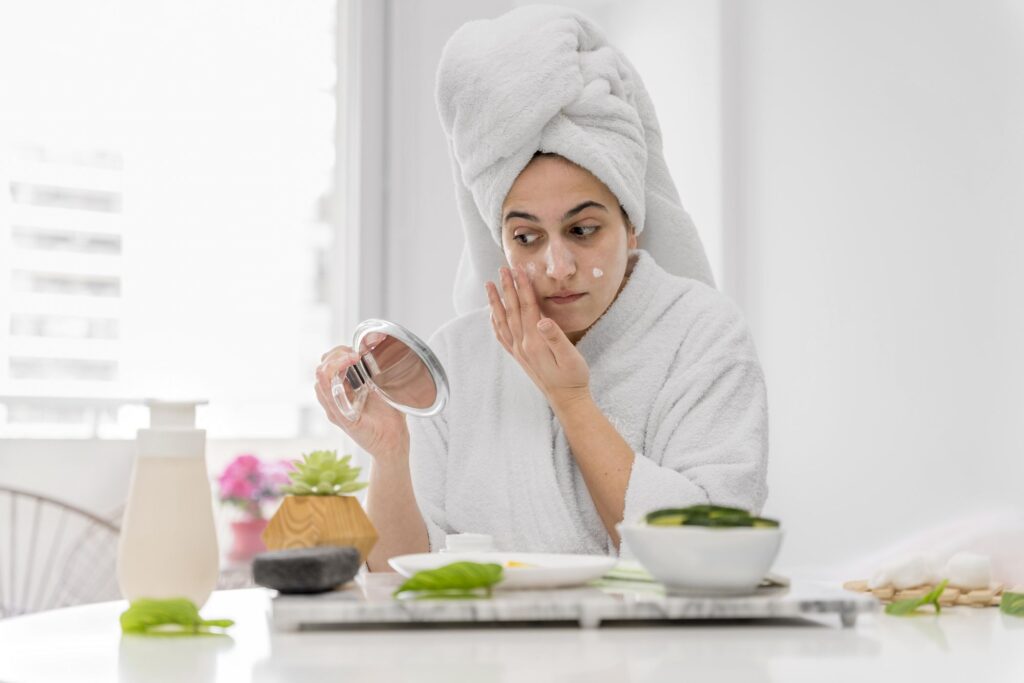In the pursuit of glowing and healthy skin, an effective skin care routine is paramount. With the plethora of products and advice available, understanding what really works can be overwhelming. This comprehensive guide will take you through the essential steps of a skin care routine, from cleansing to moisturizing, to ensure your skin stays vibrant and youthful.
Understanding Your Skin Type
Before diving into the specifics of a skin care routine, it’s crucial to understand your skin type. The primary skin types are:
- Normal Skin: Balanced, clear, and not overly sensitive.
- Dry Skin: Flaky, itchy, or rough.
- Oily Skin: Shiny, greasy, and prone to acne.
- Combination Skin: A mix of oily and dry areas.
- Sensitive Skin: Easily irritated, red, and itchy.
Identifying your skin type will help you choose the right products and tailor your routine to your skin’s specific needs.
Step 1: Cleansing
Cleansing is the cornerstone of any skin care routine. It removes dirt, oil, and impurities that can clog pores and cause breakouts. Here’s how to choose the right cleanser for your skin type:
- Normal Skin: Opt for a gentle, foaming cleanser.
- Dry Skin: Use a hydrating, cream-based cleanser.
- Oily Skin: Choose a gel-based or foaming cleanser.
- Combination Skin: A gentle foaming cleanser works well.
- Sensitive Skin: Select a fragrance-free, hypoallergenic cleanser.
Cleanse your face twice daily – in the morning and before bed – to maintain clear, healthy skin
Step 2: Exfoliation
Exfoliation removes dead skin cells, promoting cell turnover and preventing clogged pores. However, it’s essential to exfoliate correctly to avoid damaging your skin.
- Frequency: Exfoliate 1-2 times a week for dry or sensitive skin, and 2-3 times a week for oily or combination skin.
- Products: Choose a chemical exfoliant (like AHAs or BHAs) for a gentler approach or a physical exfoliant (like scrubs) for a more intensive treatment.
Step 3: Toning
Toners help balance your skin’s pH levels, remove any leftover impurities, and prepare your skin for the next steps in your routine. Look for toners with these key ingredients:
- Hydrating Toners: Contain ingredients like hyaluronic acid for dry or sensitive skin.
- Astringent Toners: Contain witch hazel or salicylic acid for oily or acne-prone skin.
- Balancing Toners: Contain antioxidants and soothing agents for combination or normal skin.
Step 4: Serums and Treatments
Serums are concentrated formulas designed to address specific skin concerns, such as aging, hyperpigmentation, or acne. Some popular active ingredients include:
- Vitamin C: Brightens skin and reduces hyperpigmentation.
- Hyaluronic Acid: Hydrates and plumps the skin.
- Retinol: Reduces fine lines and wrinkles.
- Niacinamide: Calms inflammation and improves skin elasticity.
Apply serums after toning and before moisturizing for maximum absorption.
Step 5: Moisturizing
Moisturizing is essential for keeping your skin hydrated and protecting your skin barrier. Choose a moisturizer based on your skin type:
- Dry Skin: Use a rich, cream-based moisturizer.
- Oily Skin: Opt for a lightweight, gel-based moisturizer.
- Combination Skin: Use a lightweight moisturizer on oily areas and a richer one on dry areas.
- Sensitive Skin: Choose a fragrance-free, hypoallergenic moisturizer.
Step 6: Sun Protection
Sunscreen is the final and most critical step in any skin care routine. It protects your skin from harmful UV rays, preventing premature aging and skin cancer. Look for:
- Broad-Spectrum SPF: Protects against both UVA and UVB rays.
- SPF 30 or Higher: Provides adequate protection for daily use.
Apply sunscreen every morning, even on cloudy days, and reapply every two hours when outdoors.
Additional Tips for Healthy Skin Care Routine
- Stay Hydrated: Drink plenty of water to keep your skin hydrated from the inside out.
- Eat a Balanced Diet: Consume a diet rich in fruits, vegetables, and healthy fats to nourish your skin.
- Get Enough Sleep: Aim for 7-9 hours of sleep per night to allow your skin to repair and rejuvenate.
- Manage Stress: Practice stress-reducing activities like yoga or meditation to prevent stress-related skin issues.
Conclusion
Creating an effective skin care routine doesn’t have to be complicated. By understanding your skin type and following these essential steps—cleansing, exfoliating, toning, applying serums, moisturizing, and protecting with sunscreen—you can achieve glowing, healthy skin. Remember, consistency is key, and with patience and dedication, you will see the benefits of your efforts over time.

Weight Loss Exercises at Home

Healthy Lifestyle Tips: A Comprehensive Guide to Better Living

The Stark Reality of Work Depression and Death in India

The Milestone of Modern Medicine: The First Successful Human Head Transplant

How to Boost Your Brain Power: Proven Strategies for Mental Clarity and Focus

The Ultimate Guide to an Effective Skin Care Routine At Home

Weight Loss Exercises at Home
INTRODUCTION In today’s fast-paced world, finding time to go to the gym can be challenging. However, that doesn’t mean you can’t achieve your fitness

Healthy Lifestyle Tips: A Comprehensive Guide to Better Living
INTRODUCTION Living a healthy lifestyle is more than just a trend; it’s a commitment to improving your overall well-being and longevity. With the rise of

The Stark Reality of Work Depression and Death in India
INTRODUCTION Job depression is a silent epidemic that is sweeping many parts of the world and India is no exception. The modern work environment, economic

The Milestone of Modern Medicine: The First Successful Human Head Transplant
INDRODUCTION In the ever-evolving field of medical science, breakthrough achievements constantly reshape our understanding of what is possible. One of the most amazing and controversial

How to Boost Your Brain Power: Proven Strategies for Mental Clarity and Focus
INTRODUCTION In today’s fast-paced world, maintaining optimal brain health is more important than ever. Whether you’re a student cramming for exams, a professional juggling multiple

The Ultimate Guide to an Effective Skin Care Routine At Home
INDRODUCTION In the pursuit of glowing and healthy skin, an effective skin care routine is paramount. With the plethora of products and advice available, understanding

Sexually Transmitted Diseases (STDs): Prevention, Symptoms, and Treatment
INTRODUTION Sexually transmitted diseases (STDs), also known as sexually transmitted infections (STIs), are infections transmitted through sexual contact. This includes vaginal, anal and oral sex.

How to Sleep Faster for Kids ||How to Help Your Kids Fall Asleep Faster: Tips and Techniques
INTRODUCTION Getting babies to fall asleep quickly can be a challenge for many parents. With their boundless energy and curious minds, bedtime can quickly turn

Amniotic Fluid Leak Test at Home: A Comprehensive Guide
INTRODUCTION Pregnancy is a time filled with its fair share of excitement, anticipation and anxiety. One of the concerns is the fear of leaking amniotic
The Marvelous World of Mushrooms: A Comprehensive Guide
INTRDUCTION Mushrooms, those mysterious fungi that sprout in forests and fields, are fascinating organisms with diverse roles in nature and human life. From culinary delights

Immediate Constipation Relief at Home: Effective Remedies and Tips
INDRODUCTION Constipation is a common digestive problem that can cause discomfort and disrupt daily life. Although occasional constipation is normal, frequent occurrences can be frustrating.

Urinary Tract Infections (UTIs) in Women: Causes, Symptoms, and Prevention
INTRODUCTION Urinary tract infection (UTI) is a common and often painful condition that affects millions of women each year. Despite their prevalence, many women are


